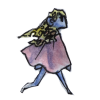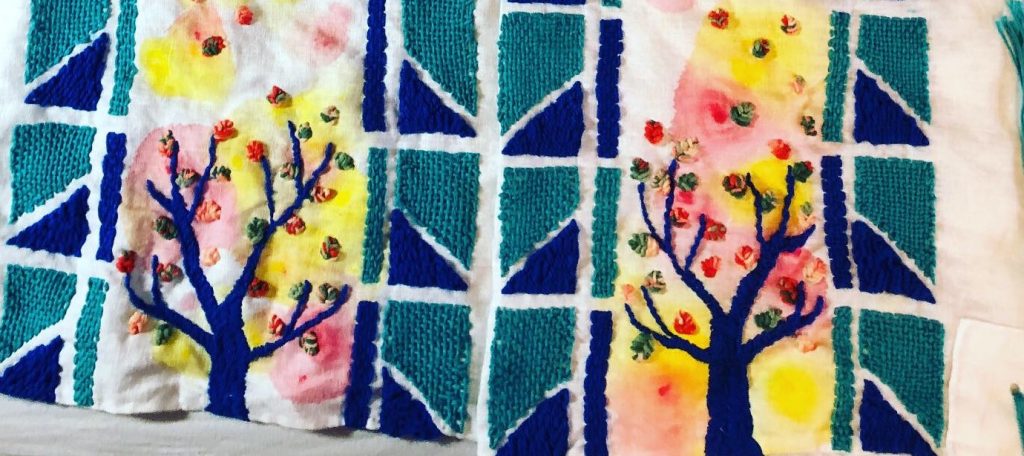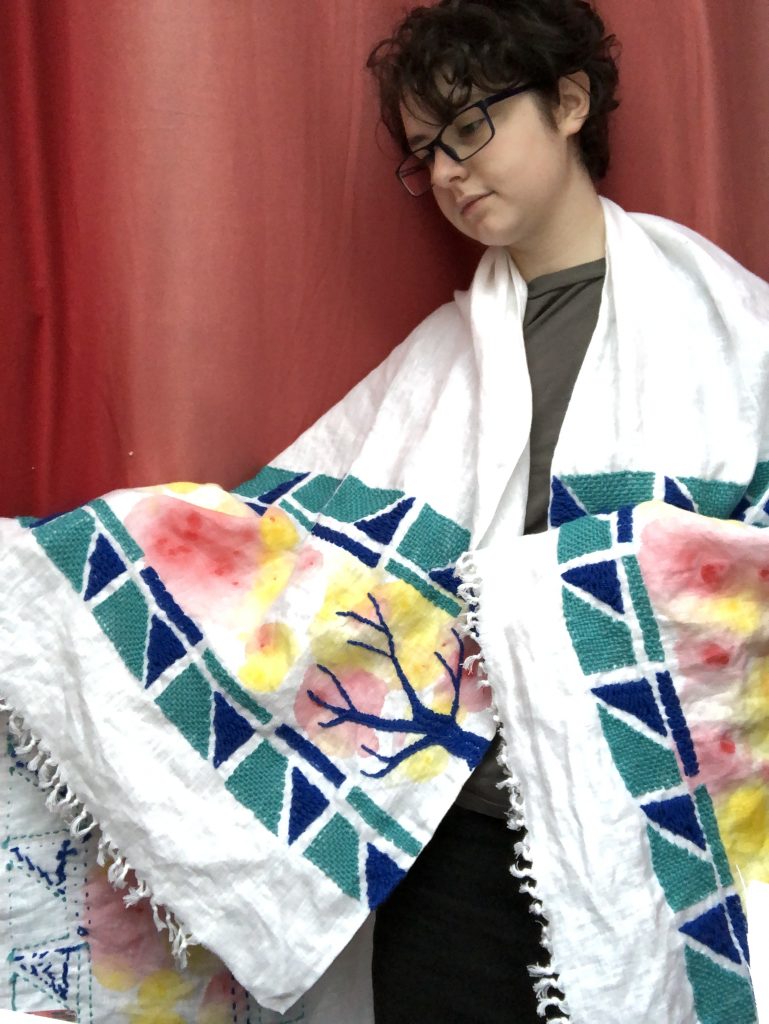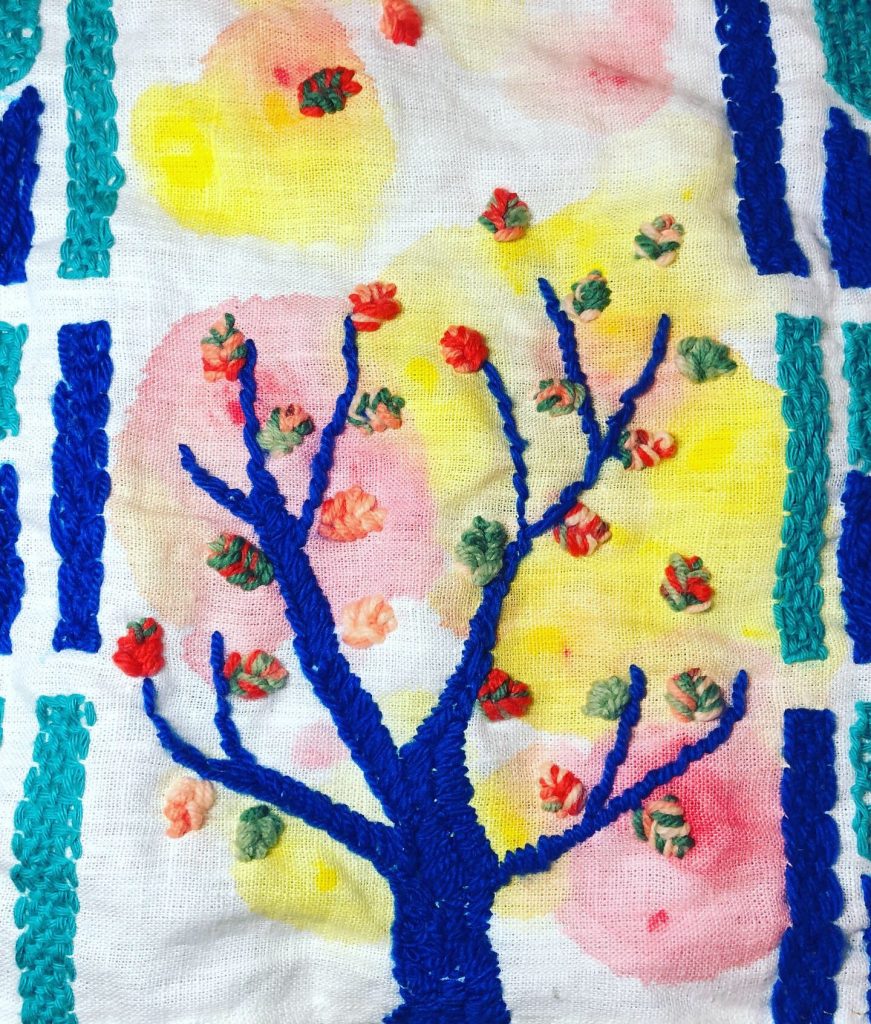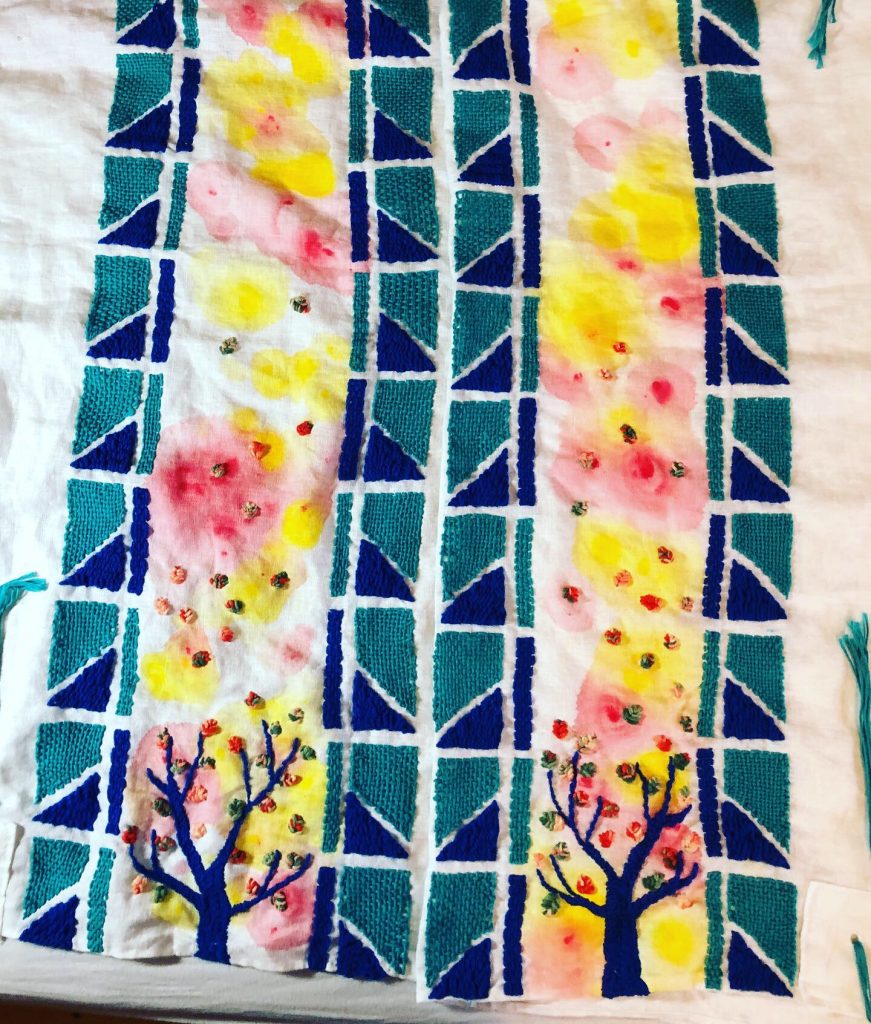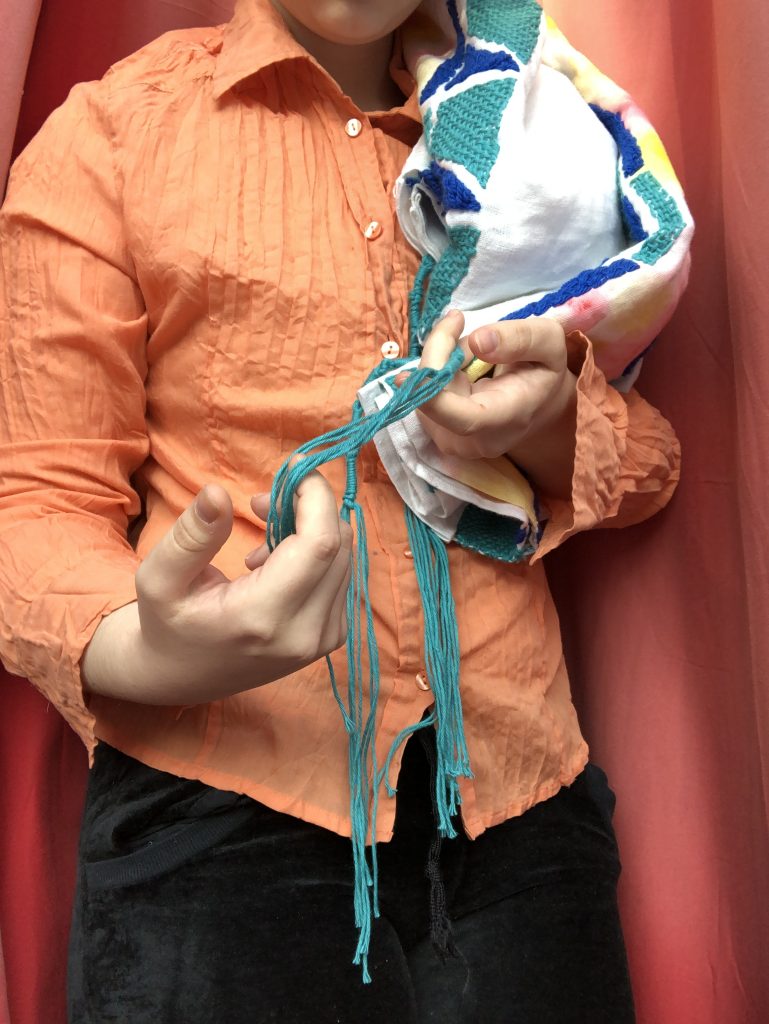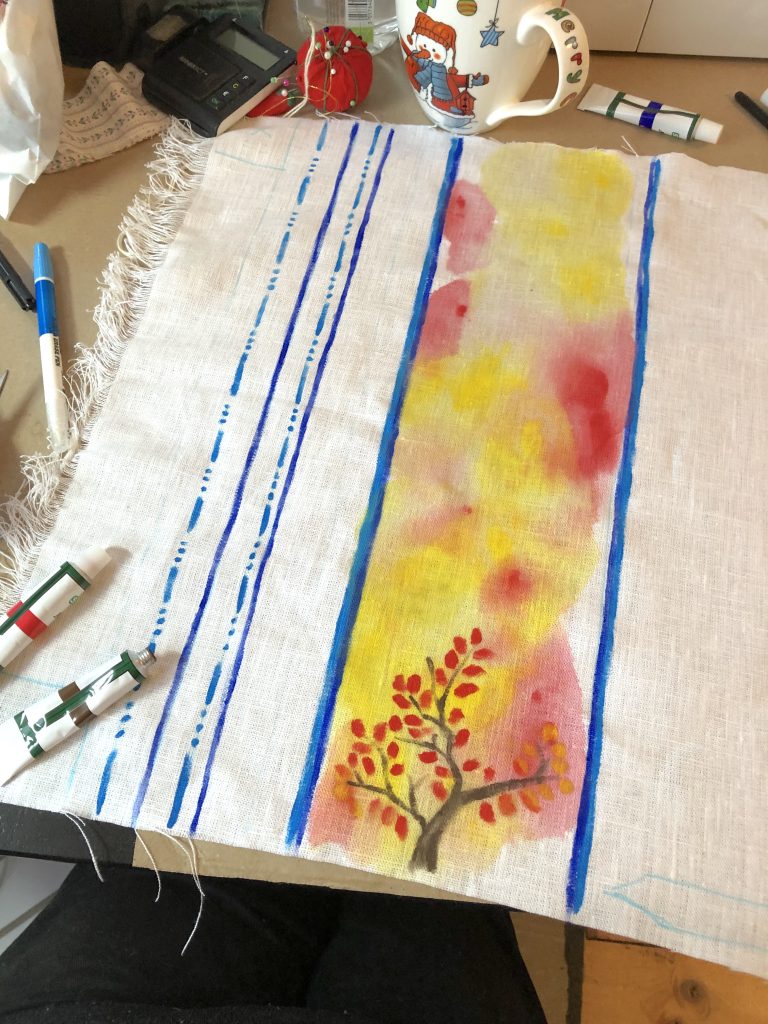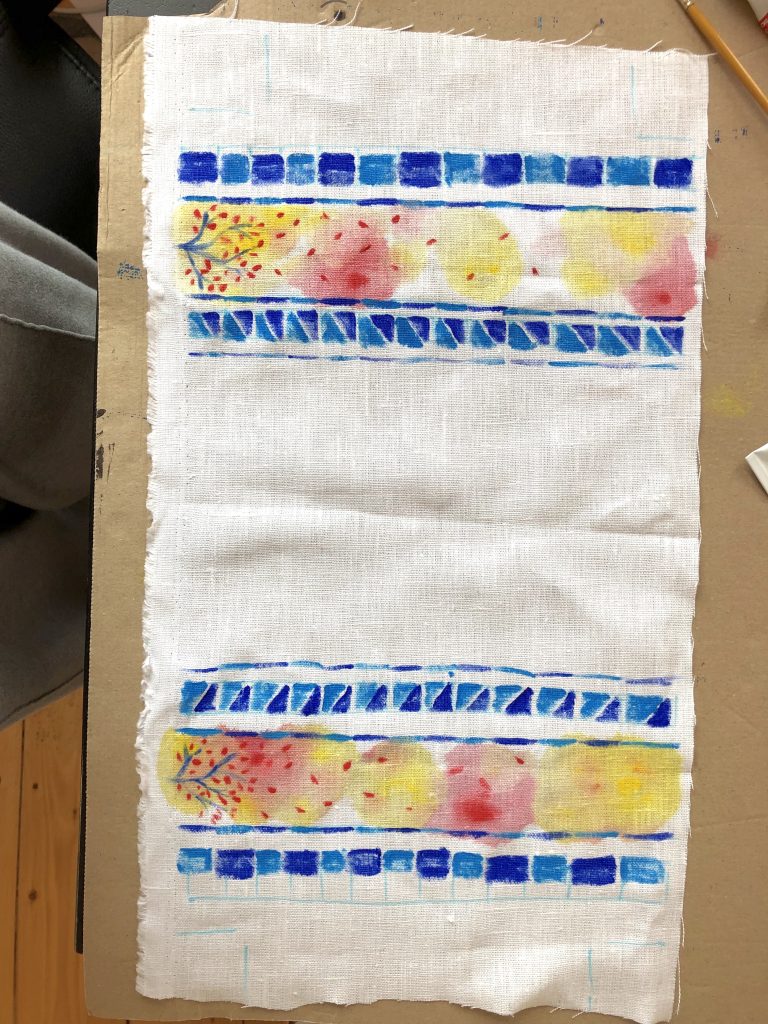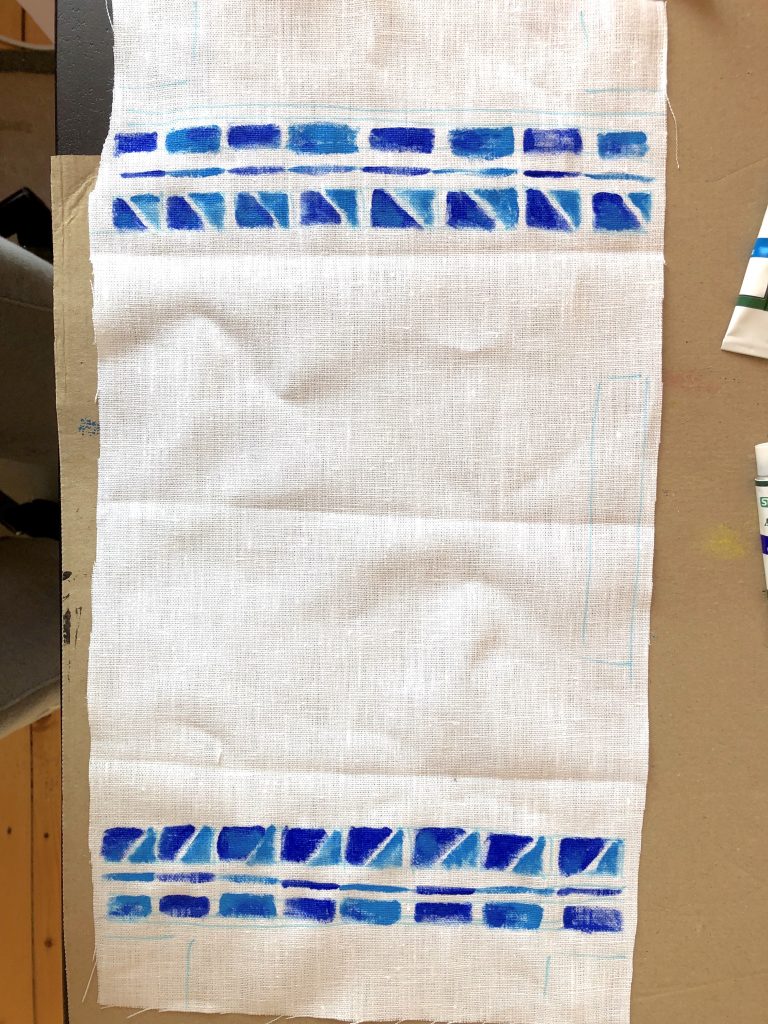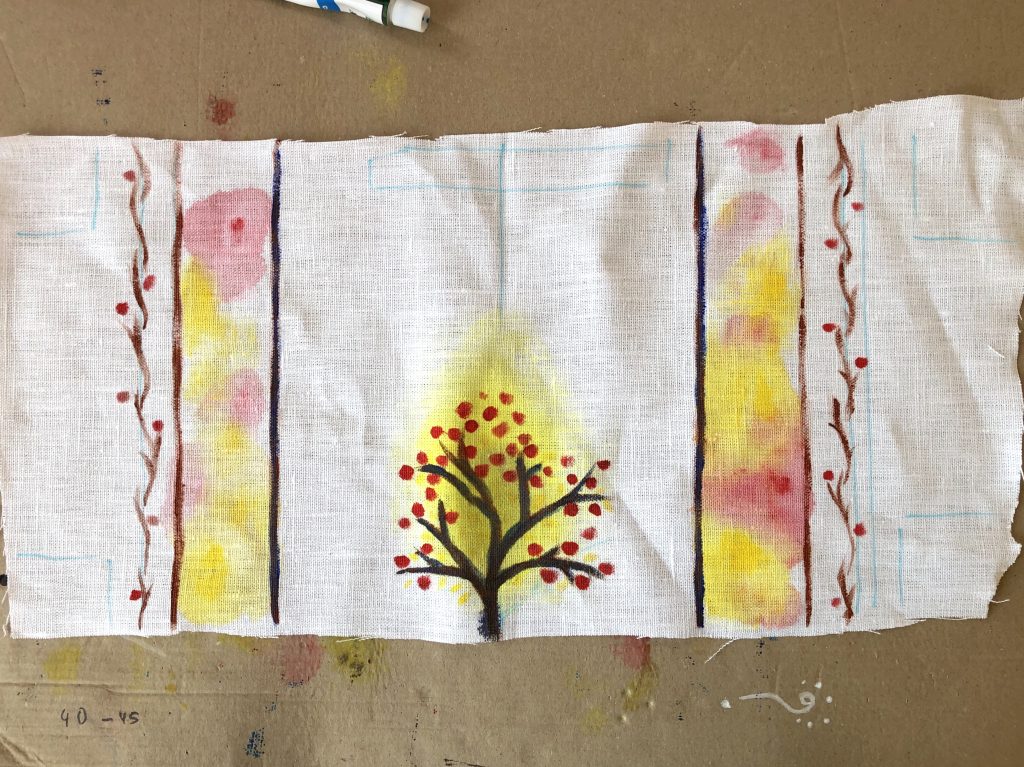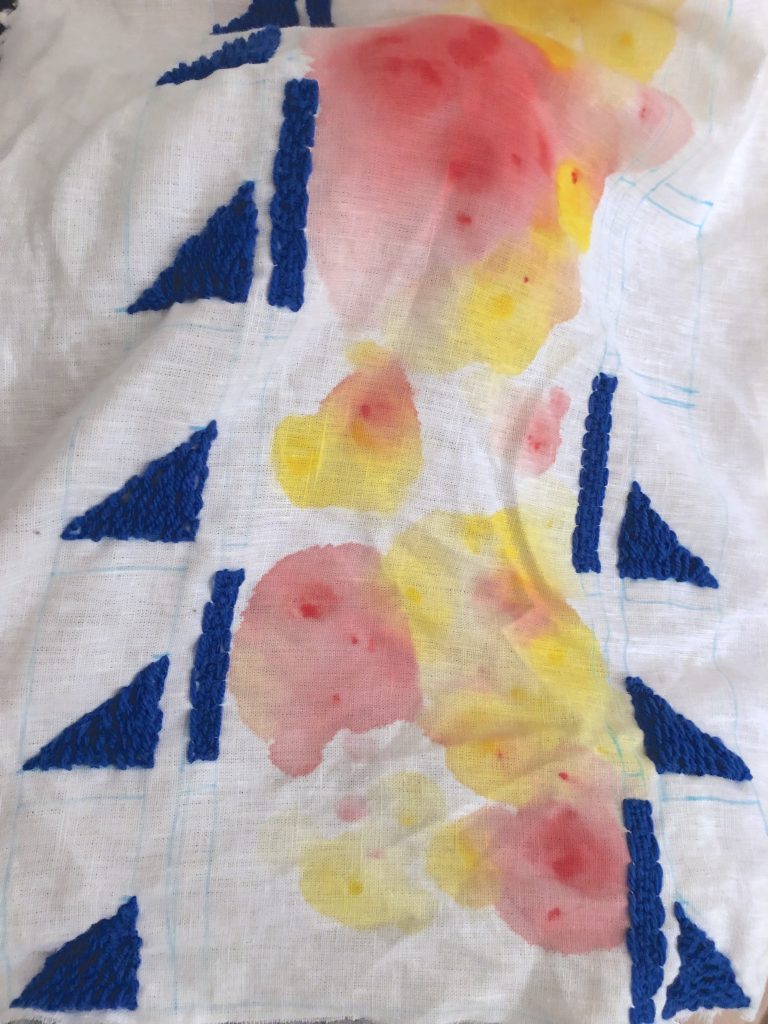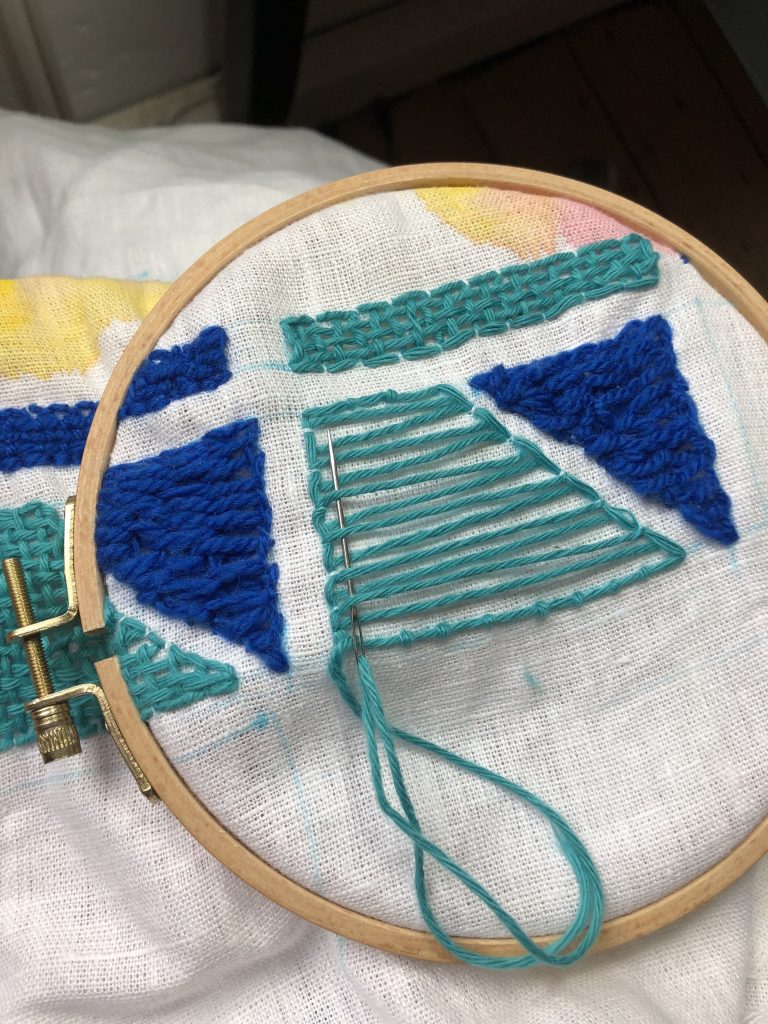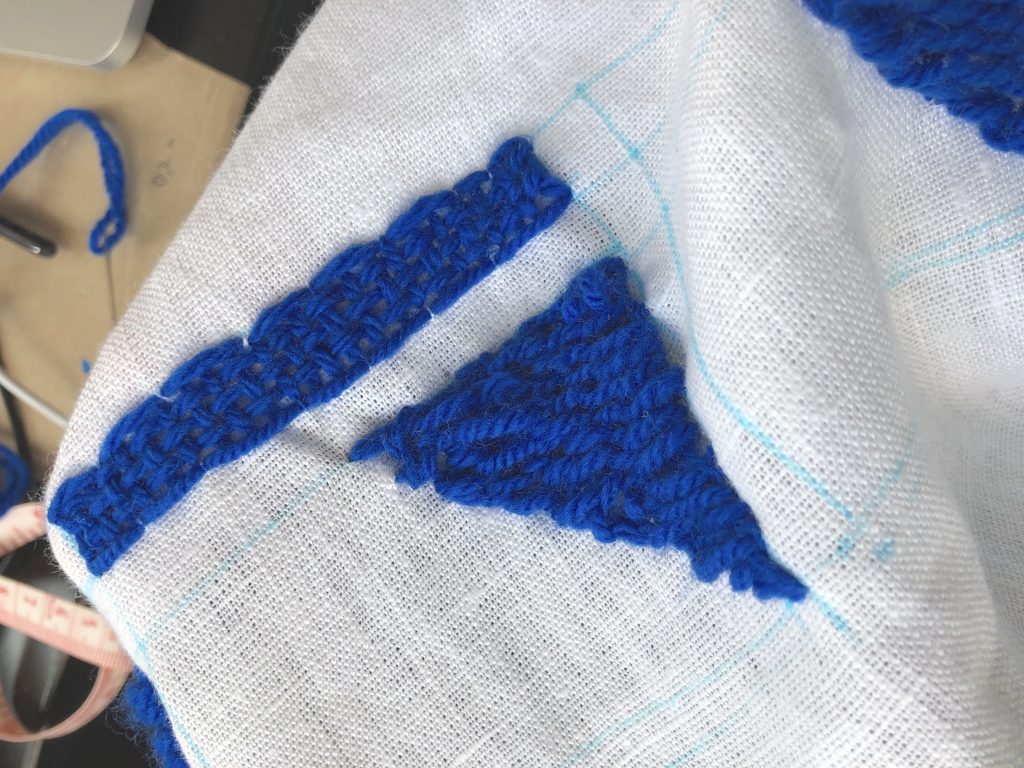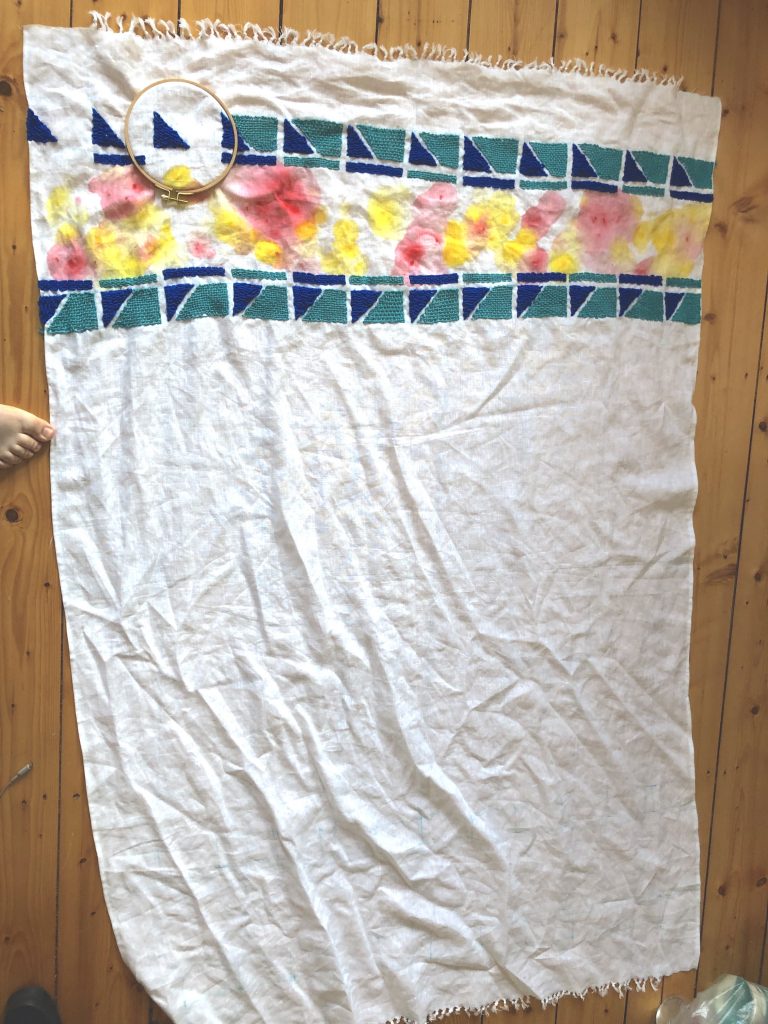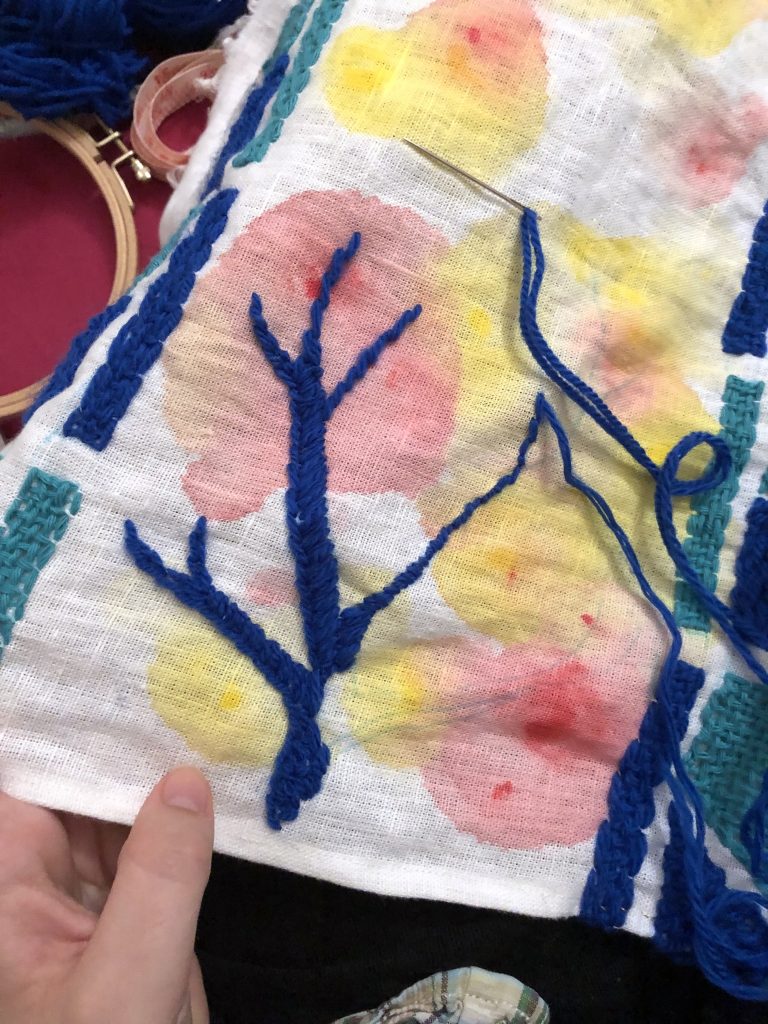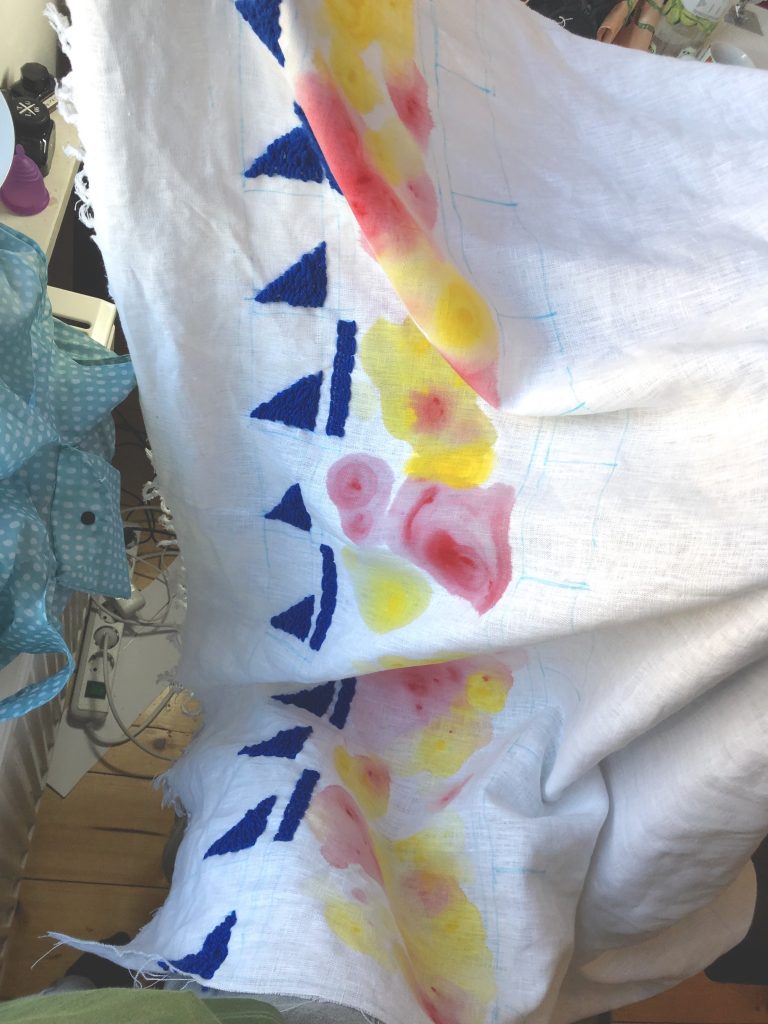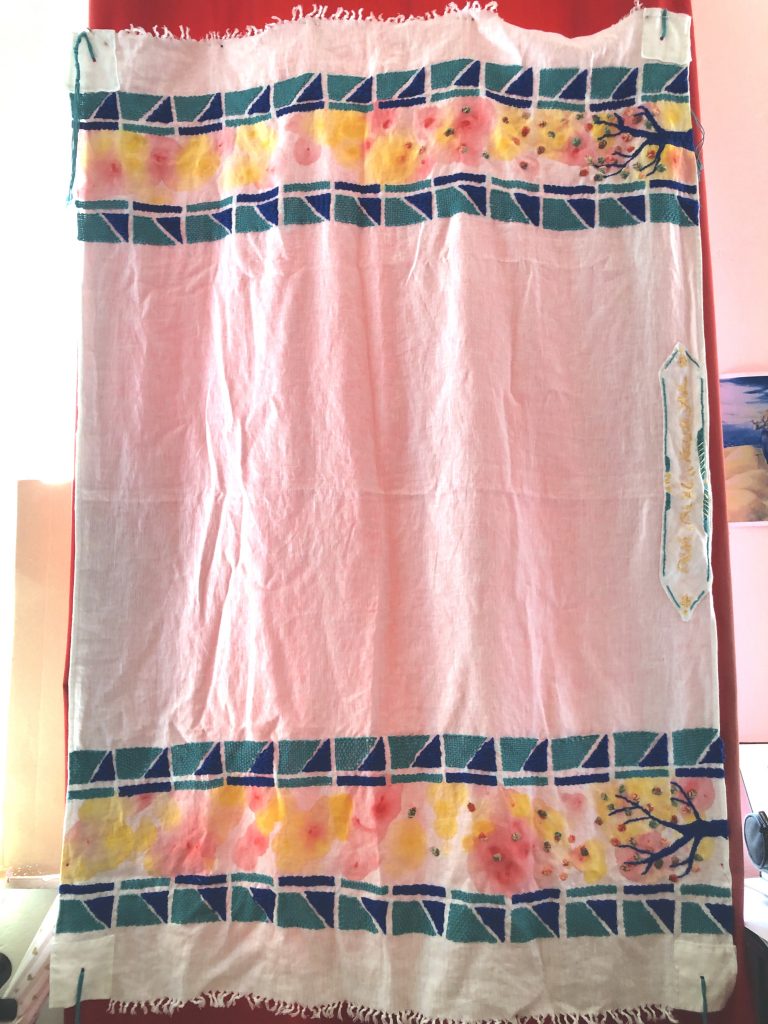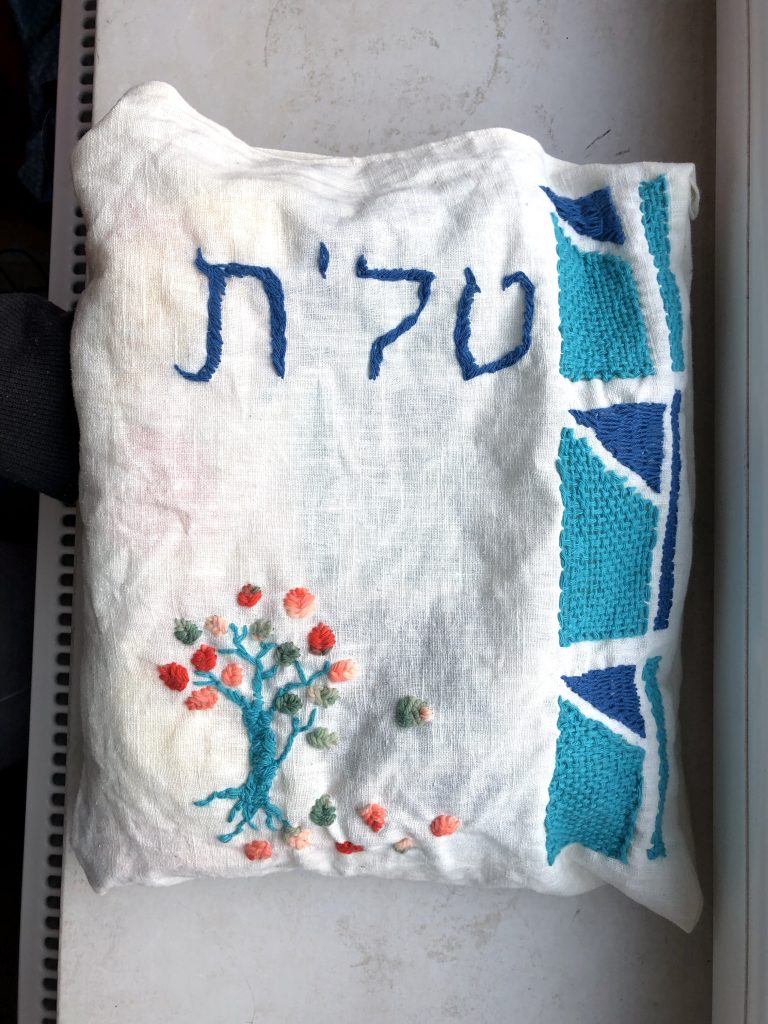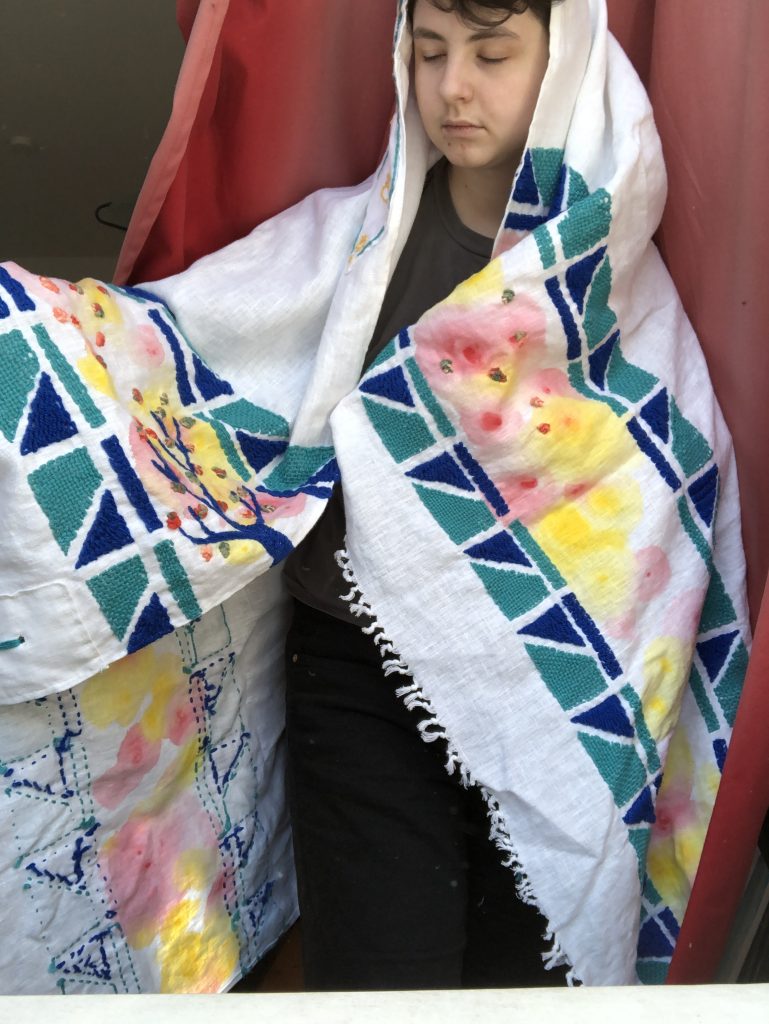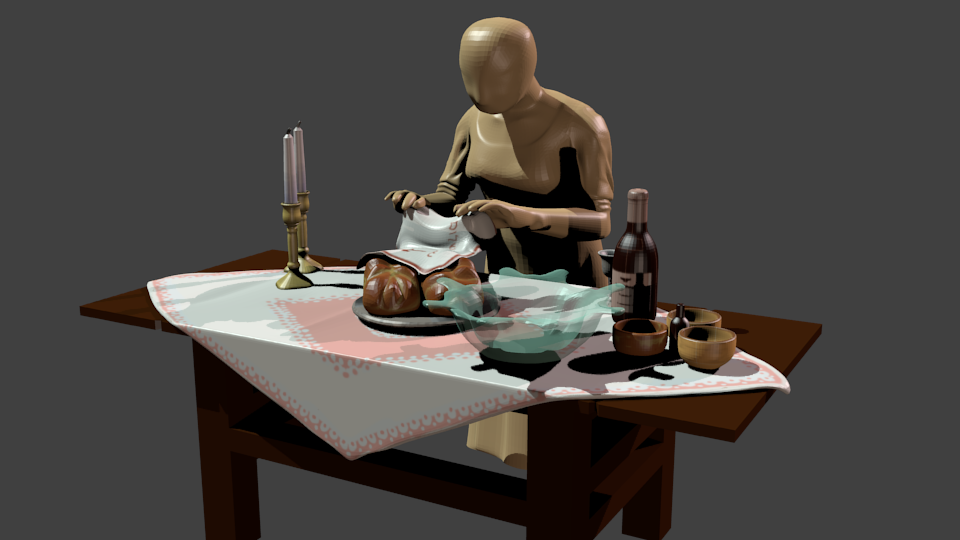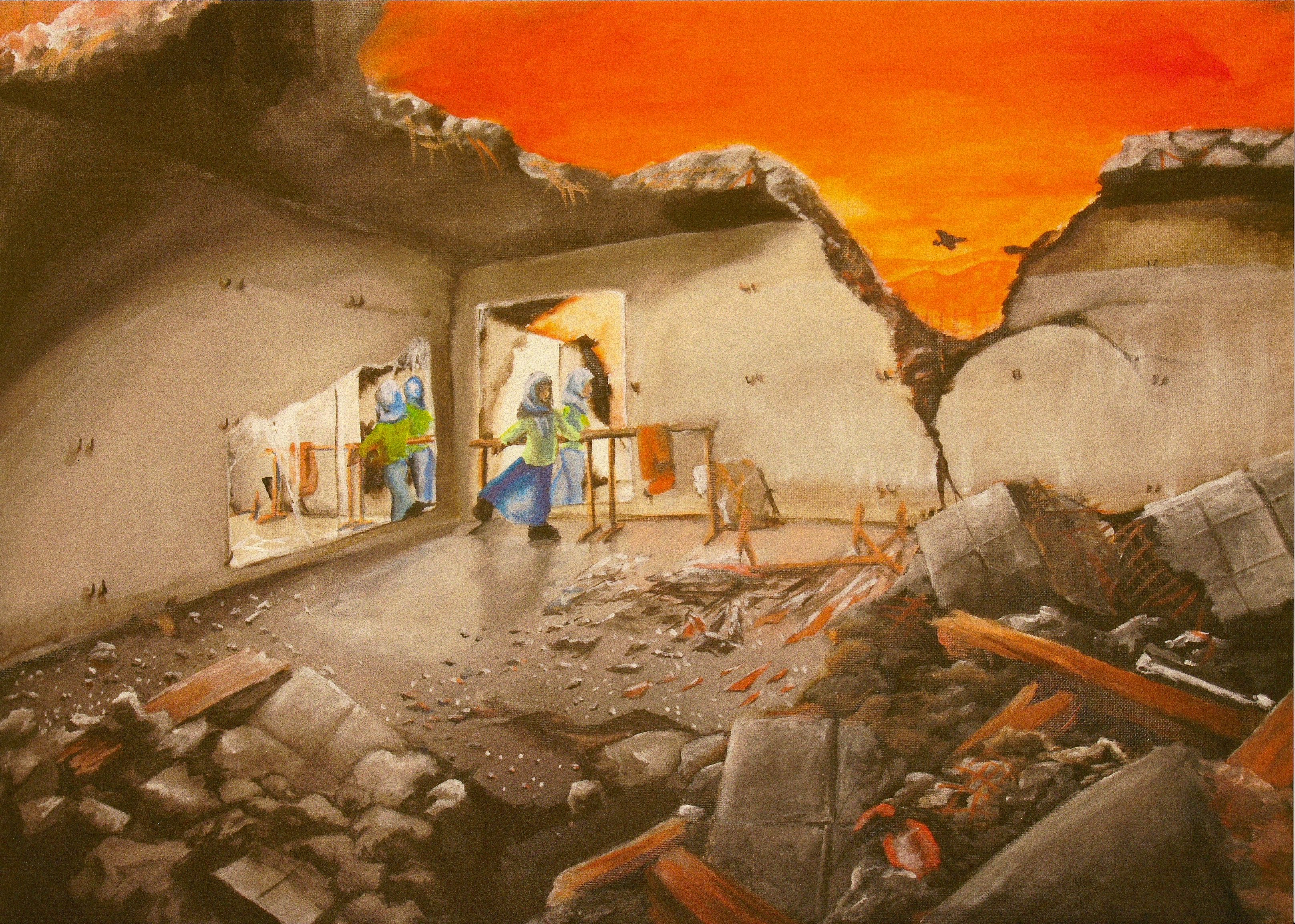The tallit gadol is a ritual prayer garment used in Judaism primarily during the morning prayer. At this time in my life I attend weekday morning prayers. I joined Judaism through my giur (conversion) in April 2021 and was studying in preparation for this since late 2018.
Something to Work for
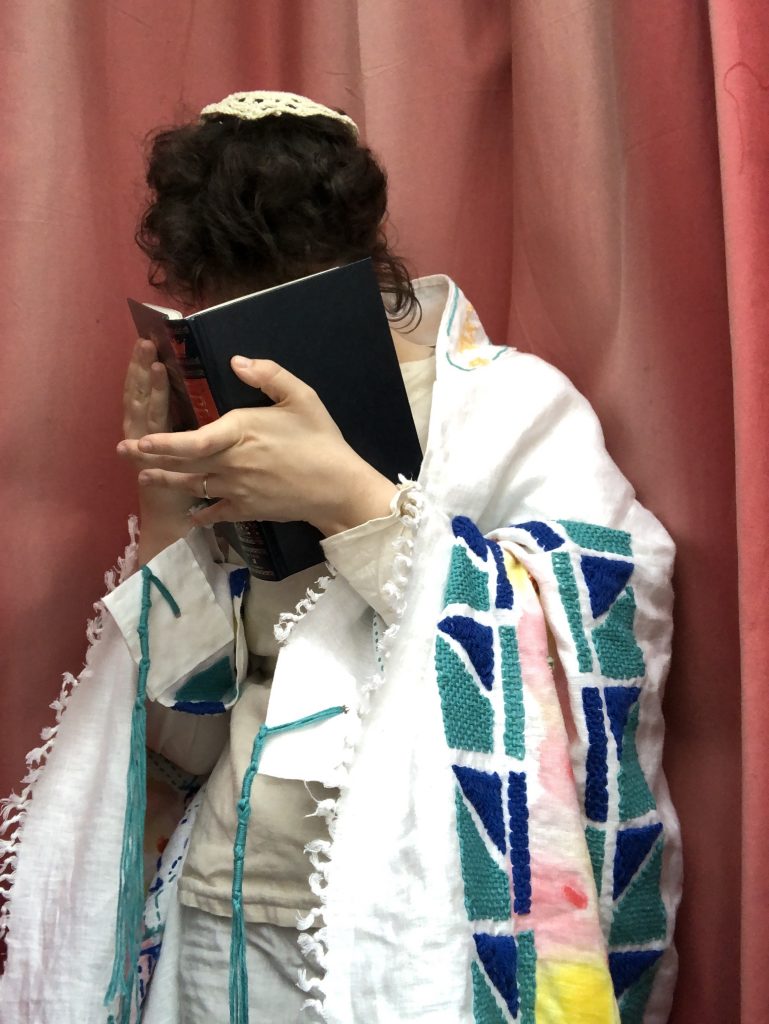
In mid 2019 I started making a tallit for myself. I knew I was not supposed to use it yet, in my synagogue the minhag (custom) is to start wearing tallit beginning with the service of your first aliyah (call to read Torah). Due to COVID-19, at the time of writing this in June 2021 I could not yet do this ceremony. Instead, I marked the start of my use of tallit with the blessing and welcoming ceremony my community did for me on the Kabbalat Shabbat service following my giur.
Just as this is a very personal story, making the tallit itself also was a very personal endeavour. It was one of the first large projects I did specifically for my jewish life. Not for school, not for work, not for any specific person but myself and my observance.
The tallit took me hundreds of hours to complete. From sketches and calculations, to shopping for materials, to embroidering, staining and knotting, I was at work for three months. This was one of my first ever embroidery projects, so I took much longer on it than subsequent, more complex projects would take. But once it was finished, I tied non-kosher tzitzit (tassles) onto the four corners for pictures… and then I could not do much else with it.
Privately I wore it a few times, falling in love with how comforting it is to cloak myself and feel like I reside in the tent of Jacob in prayer. But I knew that only finishing my giur would get me to the next step of being able to wear this publicly.
Something to Process
Working for so many hours on something lets you really think about what you are doing… and why.
I never really had doubts if I wanted to become jewish, but that does not mean I had no struggles. Theological concepts that I struggled with, working through deeply rooted prejudice about belief and by extent, believers, misunderstandings that I accumulated about Judaism and religions in general, picking apart how I, a transgender man, can position myself towards gendered traditional duties when doing “male” duties is read as me being progressive, rather than traditionally observant… Including wearing tallit. Even though women are not traditionally forbidden from wearing tallit, they are not obligated.
This goes back to the logic behind time-bound observance. While women are obligated to pray, traditionally, they could not be expected to have full control over their time, as household necessities are not known to be on a strict calendar (children need to be fed when they are hungry, not whenever their parents have time). At a time and in a society where women and men had very specific obligations based simply on those facts about them (intersex individuals were, depending on their biology, also assigned along these lines, though their gender would have different names), a man had control over his time and thus was bound to honor obligations that arise at specific times (such as prayers). Women however were not. Of course, they could still choose to wear tallit or teffilin (worn Torah quotes in little wooden boxes, attached with leather straps), it was just not very common at all.
In modern progressive Judaism, there is a different approach to the halacha (laws for jewish life) and a different approach, naturally, to gender. The approach to observance is much more based on a personal responsibility to, once educated, choose how to observe and why, rather than having someone just tell you what to do. Gender is side lined. At my synagogues, women wear tallit and teffilin. Everyone wears kippah in prayer. Seating is mixed between all genders. Women lead in prayer and read from the Torah for the congregation. These are radical compared to some traditional rules and minhagim, where some of these things are forbidden. But to me they are natural. They are stepping stones.
I am still read as female, despite my best efforts. I will not be read as male unless I undergo medical treatment that is currently unavailable to me. This results in a paradoxical situation. I am a man, doing a traditionally male element of observance. People seeing me think I am being a progressive woman though. It makes me wonder how trans women might feel if they choose to wear these male things as progressive symbols. Does it evoke the same conflict in them?
At the end of the day, by the time I finished stitching the tallit bag, I knew that I was at peace with this conflict and wearing tallit is a gender affirming act that sparks queer pleasure. It also is an act that carries a progressive, thereby challenging message to the casual observer, queering their perception of Judaism and gender roles.
And above all else and most importantly, it functions as it is intended: a means to remind me of the mitzvot (commandments/rules) through the tzitzit, a comfort zone in prayer, a symbol of observance to the world and a way for me, personally to communicate to God.
Something to Make
So. How did I make it?
The inspiration actually came from a different project: “Augmented Reality – Drawing from a Jewish Archive”, in which I did, well, that. I made an Augmented reality project based on archival furniture from a jewish home, pre WWII.
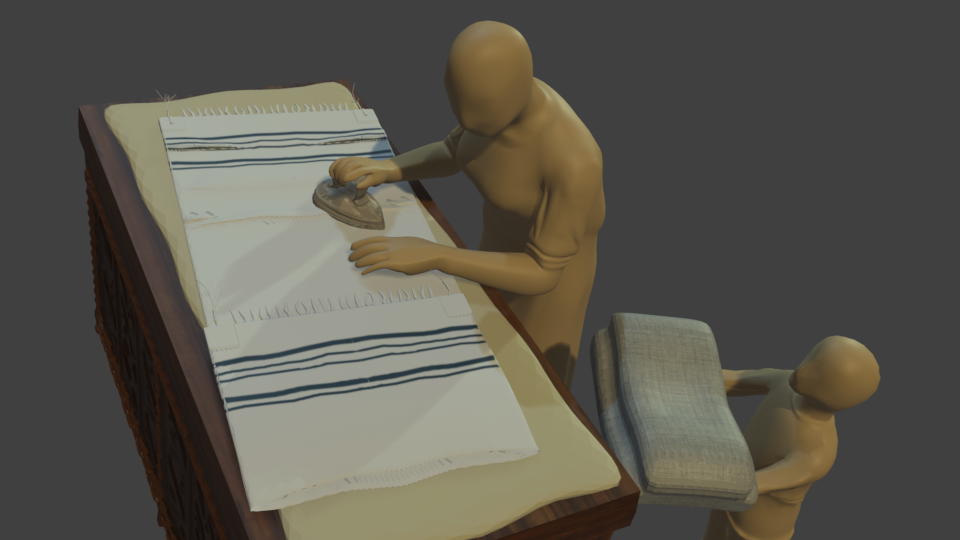
I knew as I was modelling this: I wanted to make this in real life for myself.
First I made a bunch of sketches and selected my favorite. I already had a vision for the finished project, but I needed to make sure it looked as good on cloth as it did in my brain. I knew I wanted stripes as the central design and I was considering going with a burning bush theme. Different elements from each design ended up coming together for the final design.
Next up: get the material. I bought a roughly woven, pure white linen fabric and started by measuring it out and then cutting and knotting the ends to create the fun fringe.
I marked the embroidery lines and then stained the fabric in red and yellow to make the lines. Tallis are traditionally made with blue or black stripes, so I wanted to incorporate that. But I also thought of some numbers before starting. I wanted 12 blue blocks per row, for the 12 tribes of Israel, for instance.
I re-inforced the corners with extra fabric squares and embroidered on the trees and leaves. Then all that was left was the atarah (the crown, a strip at the neck) and finally, added over a year and a half later…
The tzitzit.
Fun fact: the only thing that actually matters about a tallit is the tzitzit. Without them, it is not a tallit. But only a jew can knot kosher tzitzit so I needed to wait for my giur.
Something to Look Back on
A month has passed since my giur and I am still not fully emotionally there. Partially because it was delayed last minute by a month, I had emotionally already arrived at “I’m a jew” by the time I got to sit in front of the Bet Din (rabbinic jury) and try to convince them that I was ready to become what I already was.
This is a good thing. You are supposed to already be a jew in all ways but officially when you go to the Bet Din. I did not really understand what that meant though until I sat there, talking and realising that I really did feel jewish and all I needed was the official “kosher stamp of approval”, as my friends and I jokingly referred to it. I was nervous. But I also had a deeply seated calmness. I knew that the only thing that could possibly go wrong would be a paperwork issue or a personal one. I was jewish and that fact was no longer dependent on outward approval thereof. That was between my community and me and maybe God. There were thankfully no issues. They talked for maybe a minute, probably less, before I was called in and formally welcomed into Judaism.
A week later, I tied my tzitzit.
Every time I wear my tallit now, it marks that tiny little difference that it does make. Morning prayers feel a little different. The things I can say now feel elating. I am sure this honeymoon sensation will eventually wear off, but I hope that the other sensation does not: the awareness of obligation. People see me and they see a jew, so how I act will reflect on their perception of Judaism. Of course I do want to make an effort for that perception to be positive. But I also want it to be queered.
